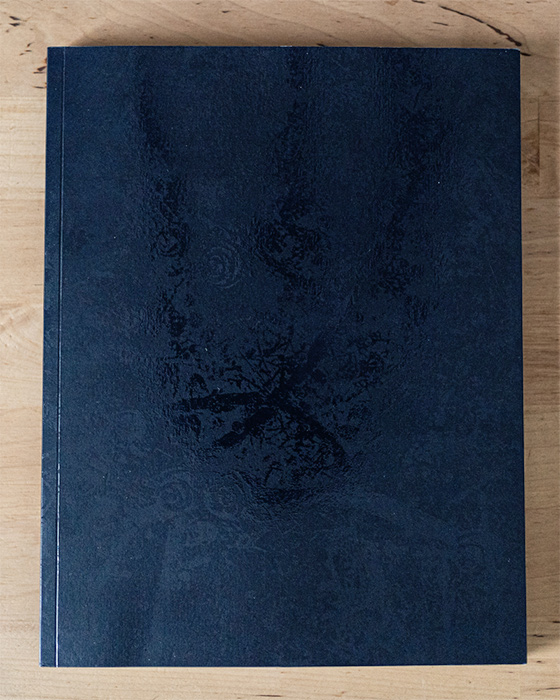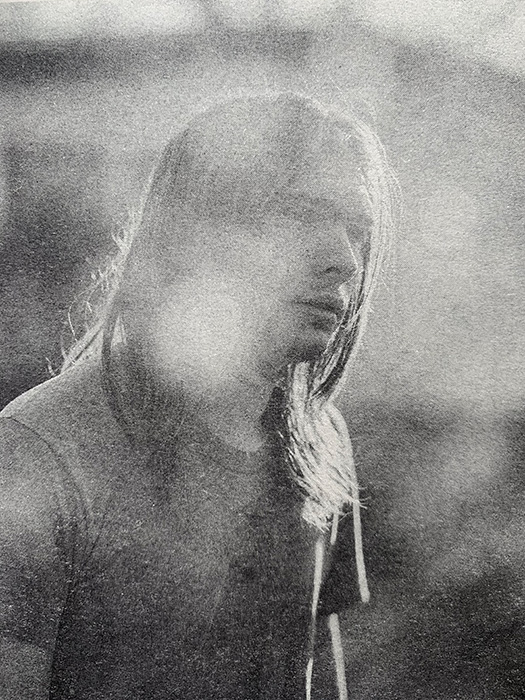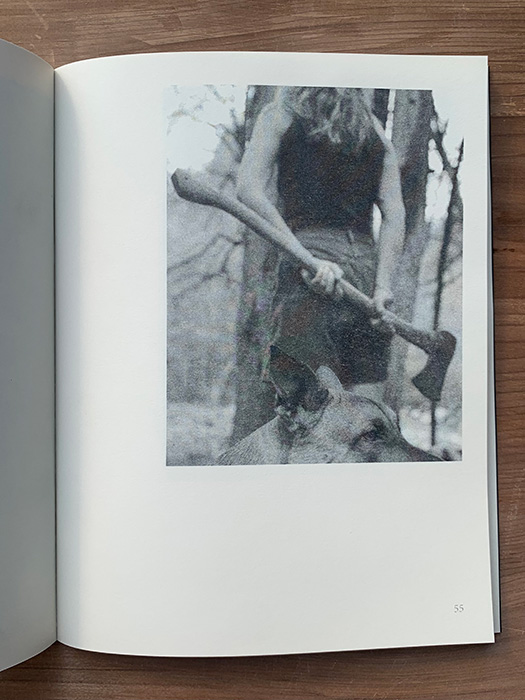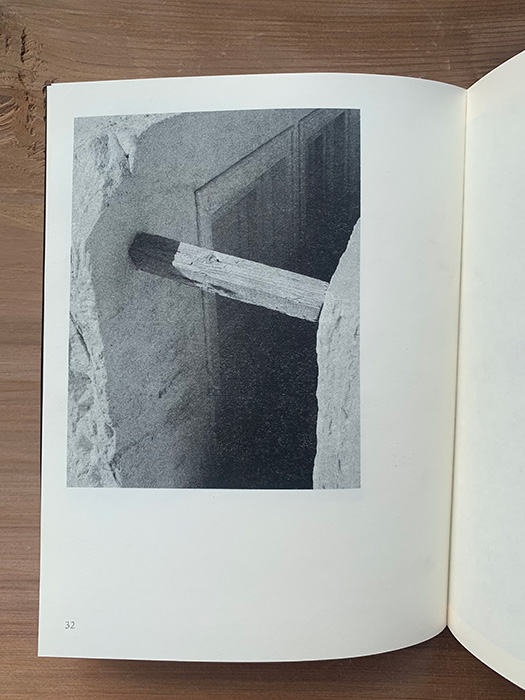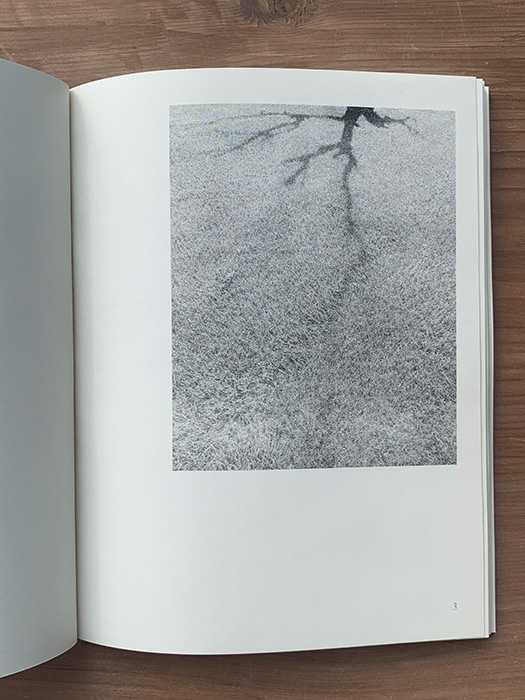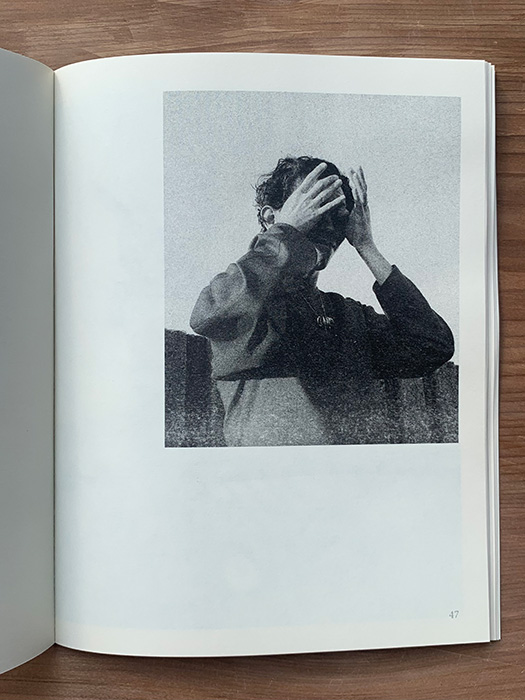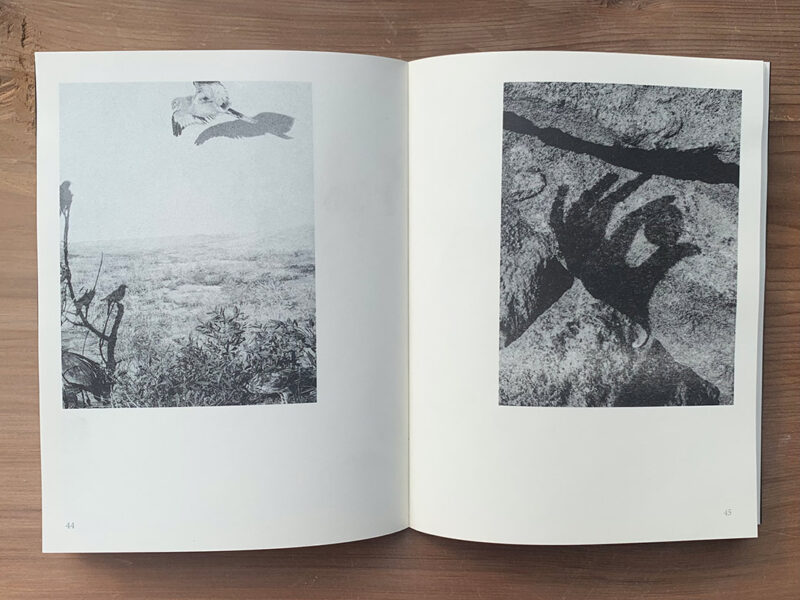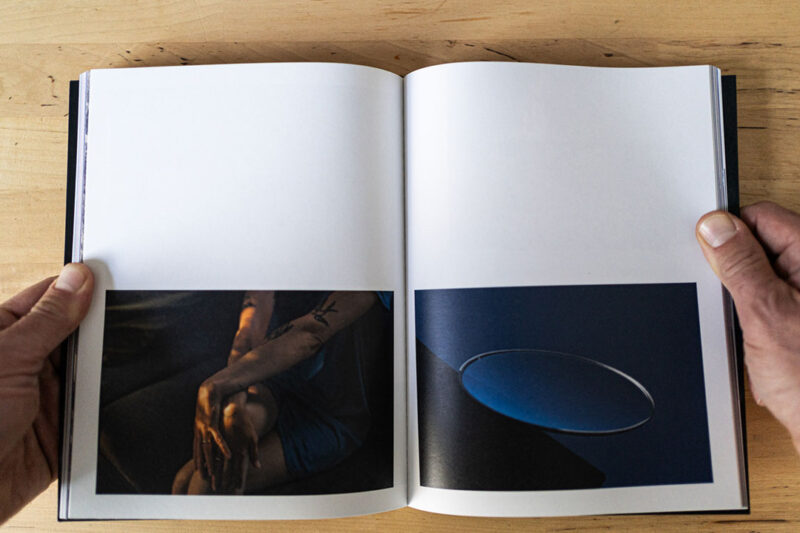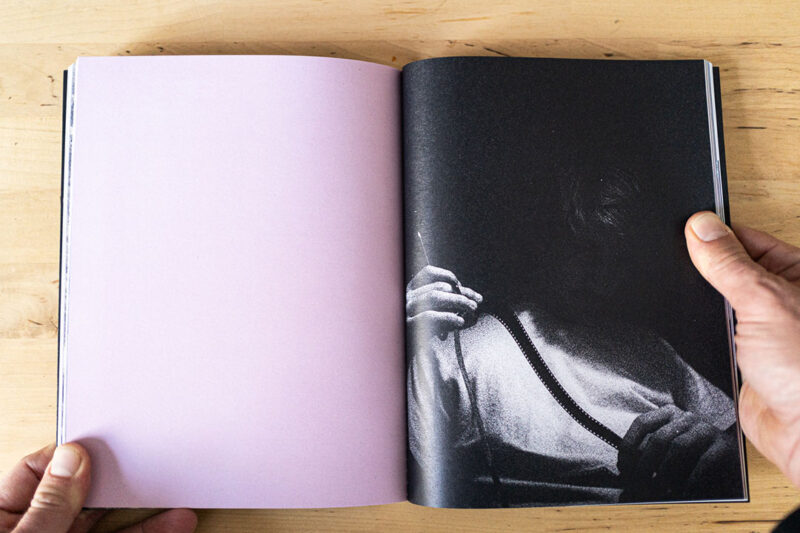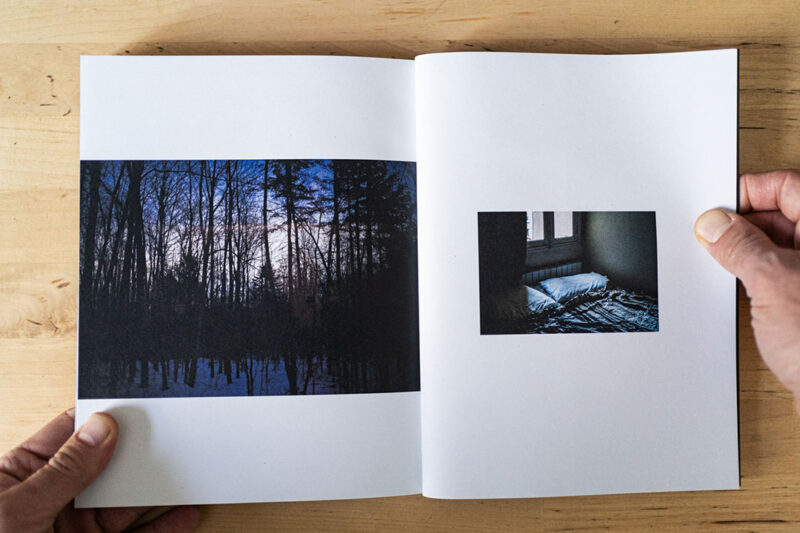[December 5, 2023]
By Louis Perreault
The history of the photobook has been built around the figures of the artist and the publisher, both essential to the medium. Such individuals sparkle with creativity, influence their peers, and make a river of critics’ ink flow.
Artists, of course, are fundamental to photobooks. They provide them with an identity – first, through the work that they present, and second by how they “render” this work by transposing it into the determinate format of the book. Publishers, for their part, compile their publications into catalogues and gradually, book by book, build their own identity. In short, these solitary stars shine in a sky that seems to grow ever vaster.
Over the last year, however, some artists have chosen to work in a spirit of collaboration to produce books resulting from the cohabitation of varied photographic visions.
Upstreams Deadfalls, published by Deadfall Press in summer 2023, is one of these books. Modest in appearance, it nevertheless contains stunning images made by twenty-five photographers handpicked by the project’s instigator, Peter Dubinski. The sequence shows figures immersed in disquieting, strange environments, mainly forests, with birds soaring overhead – a repeated motif. Here, we navigate through a dense world with few reference points, leaving us floating in light, blurs, and textures produced by the risograph printing process. This technique, with its grainy quality that makes an already poetic series even more dreamlike, has played an undeniable role in the creation of this coherent and attractive collective work. If it weren’t for the list of photographs at the end of the book, one wouldn’t guess that they weren’t made by a single artist.
Although Upstreams Deadfalls is the result of Dubinski’s “photographic writing,” his posture remains humble, suggesting a desire to recognize the artists’ shared sensibilities and imaginations. In these times, marked by individualism and self-promotion, when everyone seems to want to stand out from the crowd, to stamp their uniqueness on the various dissemination and networking platforms, this book has the merit of offering unity and highlighting a different, shared desire to belong to a community. In the process of weaving together a coherent, singular work, Dubinski celebrates the polysemic nature of the photographs it contains.
In a similar spirit, La nuit est un poème is the first publication by the collective Hors d’état, a group of eight Quebec and New Brunswick photographers, each with a distinctive approach. They decided to combine their images to create an ode to night and its poetry. Here, night is both calm and noisy, as we move from nature to a theatre. It is both private and public, as we enter the intimate spaces of unknown people and move around in relatively crowded streets. It is both glacial and summer-hot – a snowy iceberg near a beach and a field full of flowers. Whereas Upstreams Deadfalls tends toward stylistic unity, La nuit est un poème assumes the eclecticism of the photographers’ offering, which is also manifested in a dynamic layout based on formal and sometimes narrative associations, deployed in double-page spreads with fresh compositions that are almost never the same.
Given its members’ desire to bring together images that are so different from one another, the collective settled on an approach that is appropriate to a photobook: the accumulation and addition of images. Many aficionados consider this process, sequencing, to be the ultimate art of photobook practitioners. It results from the search for rhythms and combinations ideal for establishing a photographic voice, which usually depends on a precise selection of images, just as mixology counts on the perfect measurement of each ingredient. Conversely, some photobook makers choose to see groupings as an opportunity for openness and a licence for experimentation; the goal is to select images less for their possible specific role than for their capacity to add weight and depth to the ensemble, revealing a critical mass within which the importance of individual photographs fades in relation to the group into which they are integrated. La nuit est un poème seems to be based on the latter principle, as the images – some figurative, others flirting with abstraction – suggest a certain nonchalance in the selection and sequencing. The Acadian poet Jonathan Roy also evokes the fragmented experience of the night in a text in which visions full of “the pure adrenalin” of “too much alcohol” are embodied in the “UFO-airplanes that come to unzip the ceiling of the tent above our starlit swims.” Before us, then, is a strand of eternity brightening the grey of November.
The accomplishment represented by the publication of a book may seem unattainable, on both the financial and creative levels, for artists who don’t receive support from grant-giving bodies. Some will be patient, others audacious, and still others will put off their publishing projects indefinitely. Is a book featuring multiple photographers an alternative to publication of work by an individual? Probably not, but it nevertheless testifies to the intense aspirations of artists who see books as an ideal form for displaying images and ideas. Translated by Käthe Roth
Louis Perreault lives and works in Montreal. His practice is deployed within his personal photographic projects and in publishing projects to which he contributes through Éditions du Renard, which he founded in 2012. He teaches photography at Cégep André-Laurendeau and is a regular contributor to Ciel variable, for which he reviews recently published photobooks.


